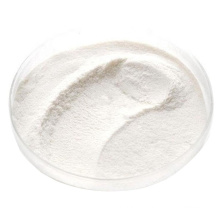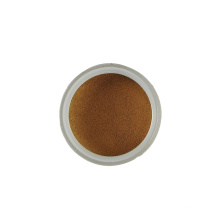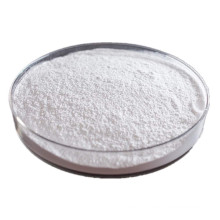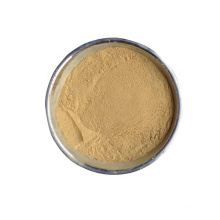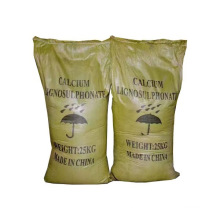Self-adhesive polymer modified asphalt waterproofing membrane adhesive
2021-05-02
1 Introduction
The success of waterproofing polymer-modified bitumen waterproofing membranes depends not only on their own quality, but also on the bonding and sealing of coils and roofing. The traditional construction method of modified asphalt waterproofing membrane is hot-melt construction. The surface of the coil is melted and then bonded to the roof by heating. This construction method not only has a large amount of labor, but also pollutes the environment, and the construction process is slightly inappropriate. The bonding of the coil to the roof or the coil is not tightly sealed, resulting in leakage of the roof. To this end, people began to research and apply self-adhesive polymer modified asphalt waterproofing membrane.
China Resin Online, new fashion, welcome you! ~ Self-adhesive modified asphalt adhesive is an important raw material for the production of modified asphalt waterproofing membrane. It has the advantages of high strength, large elongation, good adhesion, excellent low temperature flexibility, self-healing, convenient and quick construction. The adhesive is not only a bonding layer between the facing material and the roofing surface, but also maintains the adhesive sealing performance for a long time, and is also a stress buffering absorption layer between the coil and the roof. When the roof is cracked due to stress, the bonding layer has plasticity and considerable ductility. It can buffer or absorb the roof stress by its own deformation, reducing the influence of roof deformation on the cladding material, thereby prolonging the service life of the coil and solving the traditional coil. Difficulties in construction.
2, the main raw materials
(1) Asphalt asphalt is the main component of the adhesive and is the key to determining its adhesion. When selecting asphalt, it should be considered from the aspects of plasticity, elasticity and adhesion. Generally, low softening point asphalt should be used.
(2) Modified material asphalt is easy to be brittle at low temperature and easy to flow at high temperature. Adding modified materials can improve its low temperature flexibility and improve its heat resistance. Thermoplastic elastomer SBS combines the fluidity of plastics, thermoplasticity and elasticity and toughness of rubber. It has unparalleled superiority with other modified materials. SBS has become the preferred modification material.
(3) Tackifier Tackifier can improve the adhesion and wettability of the asphalt, and improve the bonding strength between the self-adhesive modified asphalt adhesive and the adherend. The selected tackifiers are mainly rosin, terpene resin and petroleum resin [3]. 2.4 Filler In the modified asphalt, talcum powder and light calcium carbonate are used as fillers, the purpose of which is to reduce cost and reinforcement effect. You can also adjust the viscosity.
3. Production process and product performance
(1) The adhesive is basically equipped with 40% to 65% auxiliary asphalt, 5% to 25% SBS, 5% to 30% tackifier, 2% to 25% filler, 10% to 30%.
(2) Preparation method Firstly, the asphalt is heated and dehydrated, and the dehydrated asphalt is metered into the stirring tank. After adding the auxiliary agent, the temperature is raised to 180-210 ° C, and SBS is stirred for 60-90 min to completely melt the SBS, and the asphalt can also be The SBS mixture promotes the melting of SBS by colloidal grinding; after the SBS is melted, the tackifier is added for 30 minutes, and finally the filler is evenly stirred, which is a self-adhesive modified asphalt adhesive.
3. Production process
Performance testing The performance of self-adhesive modified asphalt adhesives is tested by the relevant test methods of GB/T4507-1999 and JC863-2000, mainly testing the softening point and the coil-coil bonding peel strength, shear strength and bonding volume. Shear strength of the material and the substrate. The peeling strength is bonded on the 200mm×150mm SBS modified bitumen waterproofing membrane sample, and the bonding area is 200mm×25mm; the shear strength between the coil and the coil is 300mm× on the 300mm×200mm coil sample× 100mm area, after bonding, cut into 5 pieces of 300mm × 50mm sample; the shear strength between the coil and the substrate is 150mm × 50mm coil material bonded to the cement mortar sample, the bonding length is 100mm. Outside the softening point, the other samples were tested for performance after being placed at room temperature for 7 days. The performance test results are shown in Table 1.
4. Factors affecting bonding performance
(1) The ductility and wax content of asphalt asphalt have an important influence on the bonding performance. Except that the ductility of asphalt at 25 ° C is required to be greater than 100 cm, the wax content is not too much, otherwise the adhesion will be directly affected. In addition, the solubility of asphalt also has a certain influence. The asphalt used should not contain excessive asphaltenes and free carbon as well as mechanical impurities to ensure the adhesiveness of the adhesive.
(2) When SBS is modified with SBS, the miscibility of asphalt and SBS is more important. The so-called miscibility is better, the selected asphalt and the SBS modification with moderate melt index are more ideal. SBS is a block copolymer of styrene (S) and butadiene (B) in which butadiene is a soft segment; 2-terminal styrene (S) is a hard segment which aggregates into a physically crosslinked region. The block ratio (S/B) is different and has a certain influence on the bonding performance.
(3) Tackifier
a. The rosin rosin has a hydrogenated phenanthrene nucleus which is compatible with hydrocarbons and a highly polar carboxyl group in the molecular structure, so it has good compatibility with the elastomer. Rosin has a good viscosity-increasing effect, but since the resin acid of rosin contains a conjugated double bond, it is highly reactive, unstable, and easily oxidized.
b. The terpene resin used as a tackifier is mainly а-pinene or β-pinene resin, which has lower solubility and compatibility than rosin, especially the resin with high softening point has more molecular mass. The dispersible polymer compound lacks compatibility, but is still compatible with SBS pitch. The terpene resin has a slightly weaker viscosity than rosin, but it has good oxygen resistance and excellent heat resistance.
c. Petroleum resin aromatic petroleum resin has poor compatibility with SBS and is generally not used as a tackifier. The tackifier is mainly an aliphatic petroleum resin, but its tackifying effect is not as good as that of rosin and terpene resin.
Considering the bonding performance, high and low temperature performance and cost factors, it is best to use a mixed thickening system of rosin and terpene resin. The viscosity-increasing system increases within a certain range, and the viscosity-increasing effect increases with the increase of the amount of tackifier, but the viscosity-increasing effect is not obvious beyond this range, and the heat resistance of the modified asphalt adhesive will be affected.
(4) The filler is preferably a surface-treated active filler. Because the surface of the active filler particles can form a crosslinked structure with the polymer chain, when one of the molecular chains is stressed, the stress can be dispersed to other molecular chains through the crosslinking point; if one of the chains breaks, the other chains can still be It works, without jeopardizing the whole, so it can improve the mechanical properties of the modified asphalt.
5. Application of self-adhesive modified asphalt adhesive The specific production method of self-adhesive polymer modified asphalt waterproofing membrane is to apply a layer of self-adhesive modified asphalt adhesive on the surface of modified asphalt waterproofing membrane. The thickness of adhesive layer is about 0.5~ 0.8mm, then lay a layer of release paper.
During the construction, the anti-adhesive paper is removed and laid on the roof to be adhered. Once the paving is completed, the construction process can be reduced, the work efficiency can be improved, the construction time can be shortened, and the composite material can be combined with various coil materials to increase the thickness of the waterproof layer. If the coated coil material is damaged due to its poor aging resistance, the self-adhesive layer can still maintain a good waterproof sealing effect, thereby preventing leakage and saving manpower, material resources and financial resources for renovation.
Petroleum Resin (Hydrocarbon resin) is a kind of thermal plasticizing hydrocarbon resin produced by C5, C9 fraction.It is not a high polymer but a low polymer with the molecular weight between 300-3000. Featured by acid value, easy mutual solubilities, resistant to water, resistant to ethanol and chemicals.
Generally, the petroleum resins are not used independently, but have to be used together with other kinds of resins as promoters, adjusting agents and modifiers in hot-melt adhesive, pressure-sensitive adhesive, hot melt road marking paint, rubber tires and so on.
Petroleum Resin, Aliphatic Petroleum Resin, Petroleum Resin Adhesive, Petroleum Resin Paint Coating
Concrete Admixture Co., Ltd. http://www.hncarbonblack.com


